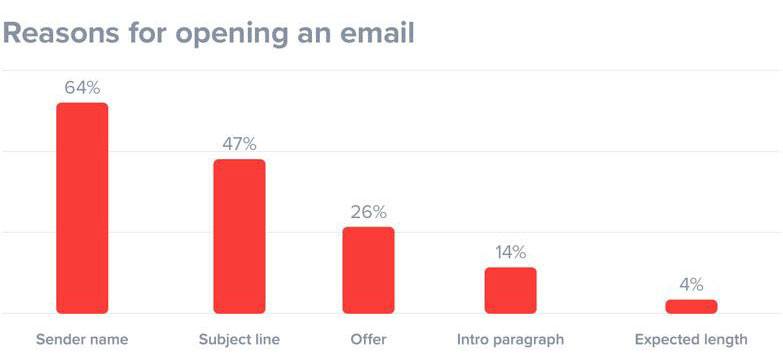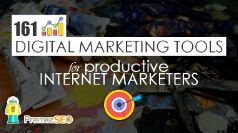7 Essential Steps to Follow to Ensure an Email Marketing Campaign Success

It’s common knowledge that email remains one of the most efficient channels to reach and engage your customer base. More importantly, it’s suitable for interacting with your clientele at all stages of their lifecycle, whatever your niche is.
However, it’s essential to underline that while it’s an accessible and powerful tool, you need to know your way around it if you want your campaigns to be consistently successful.
This is why, in this article, we’ve compiled a set of vital steps you have to make in order to have a successful email marketing campaign.
Let’s dive right in, shall we?
1. Understand What You’re Aiming For
Just like other marketing channels, email marketing demands precision. Marketing specialists need an in-depth understanding of their goals in order to achieve great results. Here are a few standard goals that email marketing specialists set:
- Interact with subscribers and keep them posted on your latest products and services to increase sales;
- Achieve greater engagement by distributing relevant content published on your organization’s blog or social media feed. Nowadays, industry leaders are also exploring curated content as a way to increase the value they offer to their subscriber base via email marketing;
- Personalize the customer experience by segmenting them based on their engagement. Finding better ways to provide more passive subscribers with additional value;
- Develop complex relationships with your clientele and potential clients;
2. Understand Your Target Audience
One of the essential aspects of a successful email marketing campaign is knowing who your end customer is — the person who’ll find your services helpful, relevant, and reasonably priced.
Having a well-defined customer persona will enable you to create content that touches on pain points that your prospects can associate with and provides them with the value that they’re looking for.
A buyer persona is an ideal customer, a person who would buy your products and services because they solve the problems.
There are many analytics tools you can use to calibrate the qualities of your ideal buyer. If your business has a Facebook page, consider using Facebook Insights to fuel your understanding of your average client/ customer, but also tap into Google Analytics to understand who the people visiting your site are.
3. Explore Designs and Colors
There’s more to emails than just text. An email marketing campaign must take design into account. A clean and engaging design that makes use of colorful and vibrant elements will enable your readership to interact with your emails and build an emotional relationship with your business.
Here are a few essential principles you need to take into account:
- Ensure readability and scalability – we’re living in the Attention Economy. Businesses need to continually fight for the users’ attention, as our attention spans shrink over time;
- Diversify content types – a few of us would like to receive a wall of marketing text from the brands we make purchases with. This is why it’s crucial to occasionally insert an image of an animation in your text, in order not to dissuade your followers from reading. However, it’s best to separate video content from text, in order not to distract your users from the text and vice versa.
- Create compelling CTA’s — a strong call-to-action is an essential component of a compelling email. They entice users to visit your site, use your services, or purchase your products;
- Optimize for mobile — according to a study published by Litmus, almost 50 percent of emails accessed via smartphones and tablets, which underlines the importance of optimizing your email designs for mobile devices.
- Use subject lines wisely — subject lines are a part of the message that your subscribers will see first and this is probably what’s going to compel them to open the message in the first place.
In fact, 64 percent of subscribers in this Super Office study said that a subject line is the main reason why they open emails.Super Office
One important consideration for making subject lines work for your business is the number of words in them. For example, the above-mentioned Super Office study claims that subject lines with 6 to 10 words generate the highest open rate.
On the other hand, if the subject line has 11 words or more, the open rate decreases dramatically.
Credit: Super Office
This makes 8 words an ideal number for a great subject line.
- Always choose a clean layout — to make your email more accessible and navigable, it’s imperative to declutter it and separate it into three sections: header, body, and the CTA at the end.
This email from McDonald’s is an excellent example: an image > a headline > a body > a prominent CTA button with an awesome text.
- Use appropriate colors — there are various colors that work better with call-to-actions than others. Generally, it’s considered that red and blue buttons will have higher conversions than brown and yellow (note the number of CTA examples in the McDonald’s email above).
4. Create Cycles that Enrich Their Experience
A campaign should be consistent. It needs to have a logical flow and tell a story. The age of merely spamming people with emails until they choose to buy your stuff is over. As companies invest a substantial amount of time on improving their customer experience and maximizing the value that their email marketing campaigns offer – spamming your clientele with rubbish has become obsolete and, to a certain degree, defeats the purpose of engaging your readership.
Here are a few things that you can do to improve your prospects’ email marketing experience:
- Don’t advertise your brand too much – doing so underlines that you don’t perceive them as human beings who think and feel. To you, they’re just numbers in a lead spreadsheet. Have respect for them;
- Provide useful content – investing in both your content and curated content will considerably increase the value you provide them with. Typically people want to read interesting articles in the niches that they’re passionate about. Invest time and money into great content written and/or visual content too. Consider working with reliable writing services, rather than 5 dollar freelancers.
- Have an onboarding email (welcome email) – the first email they get should help them navigate your platform (For example, Figma’s welcome email below has useful links introducing new users to the tool) or help them understand what they should expect from you and the messages they receive from you.
It’s a known tool to attract the attention of leads and convince them to make a purchase. In fact, welcome emails’ open rate is 34 percent, which is 11 percent higher than ordinary promotional emails.
- Collect data – to understand your customers better, ask them about their interests. This first-party data will ensure that you provide them with relevant content, but also help you understand their preferences and calibrate your customer persona;
- Don’t forget to send trigger emails that they’ll receive upon completion of certain actions like shipping updates, transactional emails, support ticket responses, subscription and unsubscription notifications, etc.
5. Segment Your Emails
We’ve mentioned segmentation above, but it surely deserves a separate section. Simply explained, segmentation is the division of your subscribers into groups based on such criteria as their needs and shopping behavior with the purpose of creating more relevant and personalized emails.
In today’s crowded online marketplace, the ability to segment (personalize) your emails can make your emails stand out in overfilled inboxes. In fact, the 2018 trends in personalization report found that 77 percent of marketers personalize promotional emails, and 74 percent of them believe that it has either a “strong” or “extreme” impact on advancing relationships with customers.

Credit: 2018 Trends in Personalization survey
Segmenting your subscribers to personalize the content you’re sharing with them is quite easy. For example, you can use the following factors to segment them:
- Website browsing behavior
- Purchase history
- Geographical location
- Position in the sales funnel
- Previous email engagement
- Survey results
- Interests and preferences
6. Have an Email Schedule
What’s the best time to send promotional emails? Marketers and business owners have been struggling to answer this question for decades, but the truth is that there’s no universal formula when it comes to the optimal time and day to send emails.
However, there’s still evidence that some days provide a higher open/ click-through rate for businesses, so let’s use this evidence to help you to make a good start.
Here are some of the best findings to answer this complex question, as described by this analysis of 14 studies by CoSchedule:
- The best day to send promotional emails: Tuesday
- If you send two emails weekly, then do so on Tuesday and Thursday
- Wednesday appears to produce the best results after Tuesday and Thursday.

Credit: CoSchedule
Keep in mind that these are recommendations that you may use to start your email marketing campaign. To become a digital marketing expert, make sure to monitor the performance at all times and adjust the strategy accordingly.
7. Do A/B Testing
A/B testing is a way to determine which email performs the best, therefore, has the best chance to help you reach the campaign’s goals. Doing testing is easy with modern email marketing platforms and using a few digital marketing tools; you just need to design two variations of one email and send them to a certain percentage of your subscribers.
After the end of the testing period, compare the performances of the two. For example, take a look at how they generated opens and clicks – and make an informed decision which one to use for your main campaign.
Conclusion
At the end of the day, great email marketing is all about having an in-depth understanding of what your customer is interested in and then providing them with content that will provide them with as much value as possible.
By implementing the essential email practices we’ve listed above, you’ll be able to transform your self-serving email marketing strategy into a more customer-oriented approach that will end up significantly increasing your customer satisfaction, which in result will bring you higher revenue and customer engagement.
An advanced All-in-One Digital Marketing Course.
Mentored by Mr. Soumya Roy, the Founder, CEO of PromozSEO Web Marketing Academy.
- Reasons Your Business Needs to be on Instagram - September 16, 2021
- 7 Reasons Your Business Should Invest in Professional Content Creation - August 12, 2021
- 5 Ways You Can Improve Your Website’s Existing Backlinks - April 30, 2021










One Response
Chatbots have become increasingly important as messaging applications. The brands can reach consumers in a better way. For marketing and sales purpose, chatbots can offer your audience a personalized experience, gather and analyze customer feedback and data, and make your brand more fun. Read about the way you can enhance your chatbot marketing experience
Comments are closed.